A-Class: Marstrom M5
Full Insight on design and performance of the Marstrom M5 A-Class. Interesting point of view of the most respected cat building company, Marstrom. The M5 is equipped with the must have features present in the latest A-Class and F18 designs, the only distinctive aspect is the bow.
In a well designed hull the profile shape and cross section of the bow is not that critical as good volume, curved boards and a flat planing stern for ie, although at Marstrom they also believe that Wave Piercing is a trend that will fade away, I must say that I disagree with that specific statement.
Read the full interview with the designers, Goran Marstrom and Kare Ljung, and with top A-Class racer, Sasha Walmer to know their thoughts on the M5 design & performance-
An excellent source of design info . Check their site for more : www.marstrom .com
———-Sent by Hakan Mann-
 The M5 design from the designer’s point of view:
The M5 design from the designer’s point of view:
Goran Marstrom and Kare Ljung are the designers behind the latest Marstrom A-cat platform the M5…
The M5 has no wave piercing bow, what is the reason for that?
Our own full scale tests shows that “wave piercing” bows gives more drag than our normal bow for a certain tip moment and the lack of reserve displacement at the bow makes “wave piercing” boats much easier to tip over. Another disadvantage with “wave piercing” bows is that the more narrow deck makes the hulls much less stiff and contributes to a less rigid platform. The advantage of C bows is less surface in the hull so you can save some weight but at the cost of a less stiff hull. We at Marstrom think that a Catamaran platform shall be as rigid as possible and does not believe in the old school idea that a soft platform can be good because the hulls can move with the waves.
The stiffer the platform the easier it is to control the boat and sails equals better speed. One thing people pro “wave piercing” bows claims is that the wind drag is lower. The relative wind angle close to the water is very small so the so the difference in wind drag between a normal and “wave piercing” bow is extremely small and should not affect the performance We have notice that several of our competitors new designs are not really “wave piercing” but in essentially normal bows that has been reshaped close to the deck to look like a “wave piercing” bow. We at Marstrom think “wave piercing” bows are just a fashion and we can already see tendencies that is on its way out.
 The bottom shape as well as the scoop and rocker line is quite flat on the M5, what kind of effect will it give and what is the idea behind that?
The bottom shape as well as the scoop and rocker line is quite flat on the M5, what kind of effect will it give and what is the idea behind that?
Our philosophy is to design semi planing hulls with rather fully end ships that float more above the water than actually trying to cut it. The trick is to find the right amount of rocker line. Too deep and the hull will be slow in stronger winds and too flat the boat will be slow in lighter winds. The traditional catamaran hulls are designed on the idea of “cutting” the water and the simplified theory that a prismatic coefficient of 0,5 gives the lowest wave drag. Must traditional hulls have a Cp of 0,53 to 0,57.
Prismatic coefficient or Cp = A number to describe volume distribution of a hull. Higher numbers equals more volume in bow and stern, a square box or a cylinder has Cp of 1,0 and hull made out of two cylindrical cones has a Cp of 0,33
Full size tests and tests in ship tanks for the last 70 years has shown that the prismatic coefficient must be much higher than the normal 0,53 to 0,57 to get the minimum drag. This is mostly due to drag contributions from skin friction. Other things like spray, three dimensional and surface effects also come into play.
You say that the M5 is semi planing, why not planing hulls and what does semi planing mean.
Planing boats creates enough lift at high speed to get on top of the water. Displacement boats have hulls that create negative lift with speed and actually float deeper with speed. Semi planing is a term used for boats that creates none or just a small amount of lift. Creating enough lift to plane from a narrow hull cost a lot of drag and will slow down the boat in most sailing conditions but the top speed should be higher. That’s why we design semi planing catamarans with just a small amount of lift.
The first edition of the M5 had the straight daggerboards but then changed to the Marstrom designed asymmetrical curved foils. How does the curved foils works compared with the straight boards? The first obvious effect of the curved boards is the created lift they give. Creating lift with the daggerboards cost much less drag than creating lift from a planing hull. Less obvious effects are that you can get up on one hull earlier and that it’s easier to keep the boat sailing on one hull.
It seems that the asymmetrical curved foils shape is very sensitive and it’s easy to fail with the design. How sensitive do you think the shape is for the curved foils compared with straight daggerboards? Yes the shape of the foil is very critical. You can totally destroy the performance of the daggerboard with a bad paint job or a small damage at the leading edge or even some dirt on the foil. The shape of the foils is so sensitive that it’s very hard make a copy of a daggerboard with the same performance. If you have enough knowledge to make a good copy then you have enough knowledge to make your own design.
There are some problems to consider when it comes to designing curved foils. Sometimes the boards will create side forces working against to each other and in other conditions you will have a negative lift at the root and positive lift at the tip of the foil. Both these examples cost drag and one has to design the curved foils to minimize the drag from these two cases. Our solution has been to develop a slightly asymmetrical profile and then experiment with the angles of the foils. We load the tip of our curved board more than on a straight one and we load the leeward board more than the upwind board, all this to find a good balance between lift and drag.
There is a lot discussion where to place the daggerboards and the mast, some designs move everything further back. How far do you think it’s possible to go and still get a good balance in the platform? The most important thing is to find a good balance in the boat. If you have a boat that have a tendency to dive then you have to move back the mast and daggerboards. If you move the daggerboards backwards then you will unload the rudders, but if you move them to far back then it will become difficult to tack with the boat, control it at the starting line and sometimes it can even become hard to steer the boat in a straight line. Our hulls has another volume contribution than most of our competitors so our boards are placed a little bit further fwd than most other Acats. Actually the curved boards are placed a few cm further fwd than our straight boards.
The M5 is built with epoxy prepreg carbonfibre and autoclaved baked with overpressure and heat, i.e. state of the art technology similar as used to Formula 1 cars and the aircraft industry. Carbonfibre is a fantastic material but how important is it to use the right production technology in order to bring the outmost from the carbon fiber properties? The production technology is defiantly important for the result. Producing parts in with prepreg materials placed in vacuum bags, a pressurized oven and cured in high temperature gives normally a huge improvement in quality compared to cure the laminate without he pressurized oven. Both the temperature and the pressure helps in minimize the number and the size of imperfections in the laminate.
How does this effect the life time value?
This makes the product last much longer. It’s no secret that the Marstrom boats have a long life expectancy.
The beams on the M5 are bolt on to manage easy assembling and transportation. How is this possible without affecting the overall stiffness?
If it’s done correctly then a bolted beam/hull connection can be very stiff and the weight penalty compare to glued joint is small.
—-
Sascha Walmer interview on the M5 Performance:
Sascha has been sailing the Marstrom A-cat platform for many years and he is definitely one of the top names in the worlds A-Cat racing scene.
He is sailing the M5 design with great success, 2009 Sascha was 3rd overall / 2nd European in the European Championship and 2010 he was at 6th place in the World Championship. He is also dominating the A-cat racing scene in Switzerland with a huge number of wins. What are his comments about the M5 design.
What’s your general feeling of the M5 design
Marstrom Composites has followed it’s own way for many years and especially the bow looks different than most of the other platforms with their Wave piercing design. My results in all wind and wave conditions over the last years as a ‘Tourist-Sailor’ proof that the design of the M5 must be very competitive.
You have sailed the M5 both with the straight boards and then changed to the curved foils. Can you please tell us the effect of the change For me, the curved centerboards from Marstrom Composites made a clear improvement in medium to strong conditions and no disadvantage in light wind compared to the straight boards. It doesn’t make the boat 20% faster, but in a class like the A-Cat that is already on a very high level, small differences in speed can make huge difference in ranking.
It’s important to say that there are significant distinctions (profile, stiffness, radius…) between the curved boards that are on the market. A good straight canted board is for sure better than a bad curved board. I’m very happy that already the very first boards from Marstrom Composites are still state of the art. Some other boat builders are/were struggling with poor performance and quality issues (breaking) of their curved centerboards; this is why they had many changes in the last years and some are using or have even copied centerboards from Marstrom Composites. It’s more fun (and cheaper) spending my time on the water and not in the shipyard;)
You have sailed your current M5 now for 3 years and the platform looks like brand new. What’s your opinion of the Marstrom quality and life time value? You can discuss the different boat designs with other sailors for weeks without coming to a conclusion, but there is no doubt among the sailors I’ve talked with that Marstrom Composites has the outstanding quality (stiffness, life time, finish, details) among these high-end boats.
It was very impressive for me when I was with my family in Sweden this summer, seeing some 15-year-old Marstrom boats looking still modern and being stiffer than most new designs of other boat builders. I’ve been sailing one of these boats and was still fast compared to new boats. Boats of other boat builders at this age are usually broken apart and I’m sure that the owner of such a Marstrom-‘veteran’ can have fun for many more years.
Nowadays, all modern A Cats are about the same price. So it’s no rocket science that a boat with 20+ years life time is a much better investment than a boat with shorter lifetime for the same price. Another positive fact for the value of a used boat is the fact, that Marstrom Composites keeps the same model (only details are changed) for a few years and if the new is lunched, it’s already fully developed so you don’t have to fear nasty surprises.
The M5 is designed to be very competitive in all wind and wave conditions. What do you think about the M5 design in light, medium and strong wind?
It is very important for me to have material that allows me to have good speed in all conditions; the results in the last years proof that the Marstrom platform is always very fast.
Even if the speed differences of most of the newest platforms are very small, I think that the Marstrom platform can handle strong wind easier than the other platforms. This allows me still to concentrate on sailing fast when others are already in survival-mode.
This summer you were sailing the M5 in Loftahammar in Sweden together with Goran and you were changing to the new Marstrom mast, so from now you are also going to use the Marstrom mast. Please tell us your feeling and the reason for the change. When I switched to the Marstrom platform, it was important for me not to change everything at the same time. This is why I kept my old mast until now.
Everybody is talking about platforms, but I think that the rig as a combination of mast and sail is at least as important as the platform. Your new mast layout seems to be very interesting: compared to my existing mast, this new mast is stiffer sideways and softer for/aft. This helps to have the possibility to depower upwind when necessary (mast is rotated in) and to power up downwind (mast rotated out). Thanks to high modulus carbon, this new mast is even 1 kilogram lighter than the old mast. The finish is like the rest of the boat a class for its own.
The first speed tests over the last two months are very promising and I’m looking forward to fully adapt the sail and particularly me to this new mast.www.marstrom .com
———-





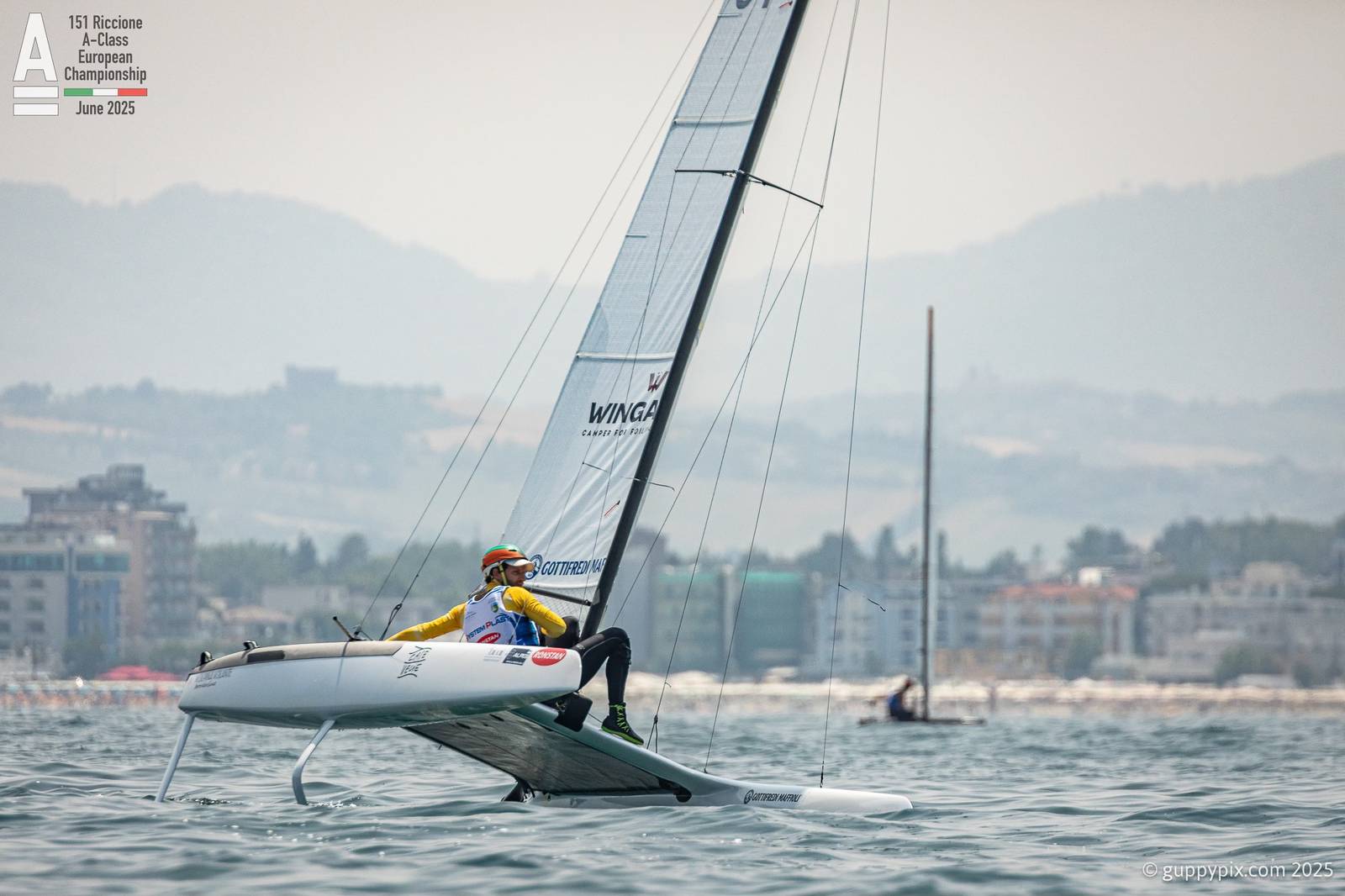
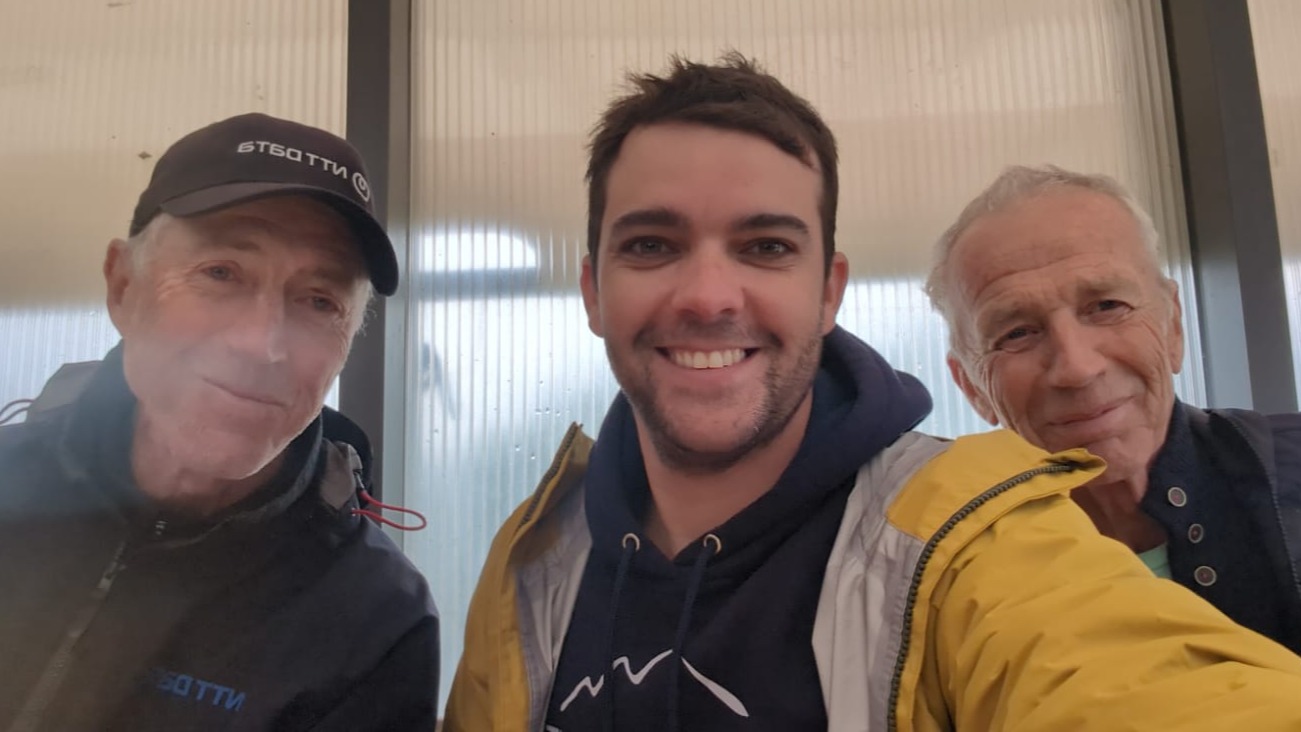
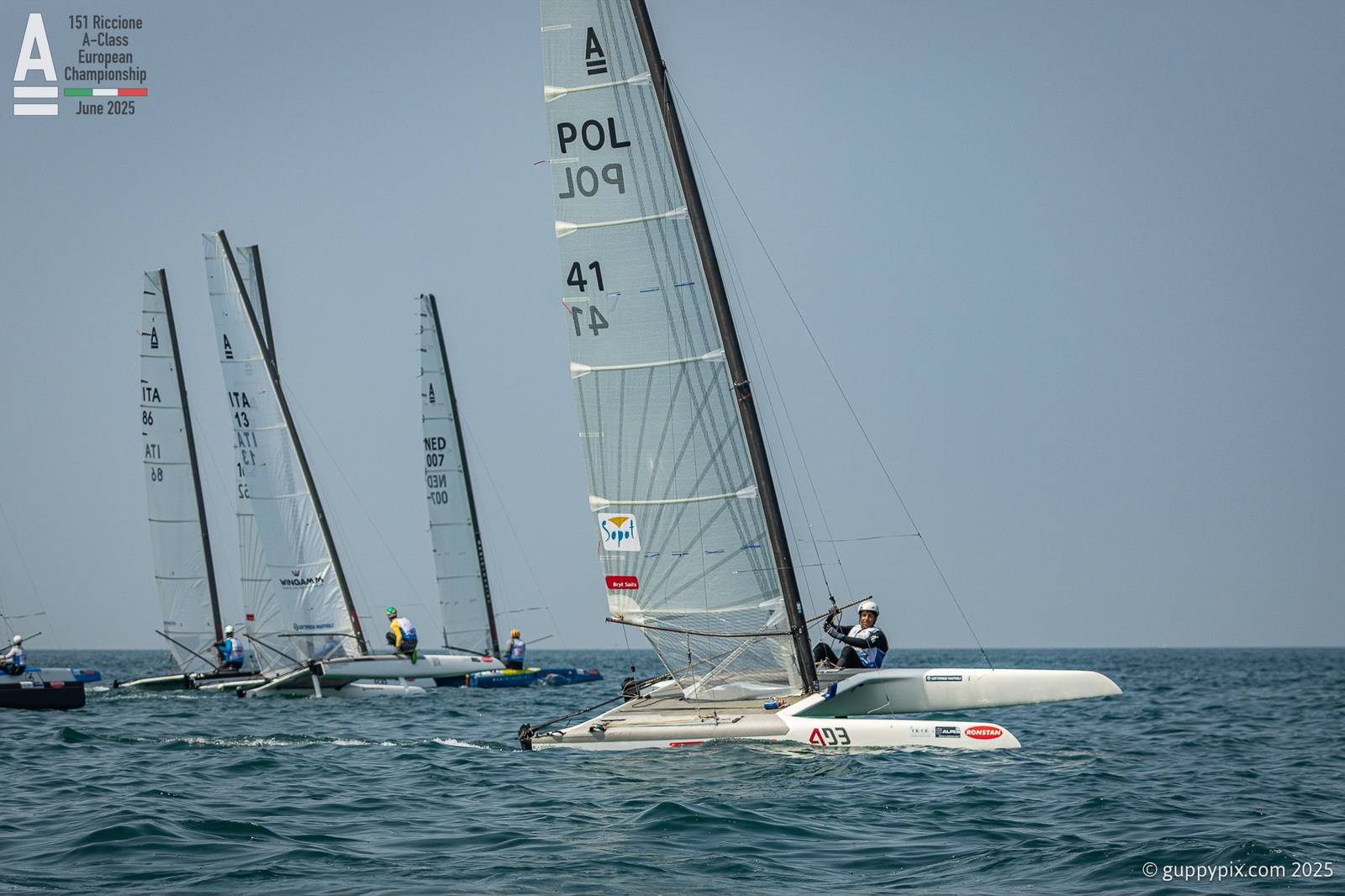
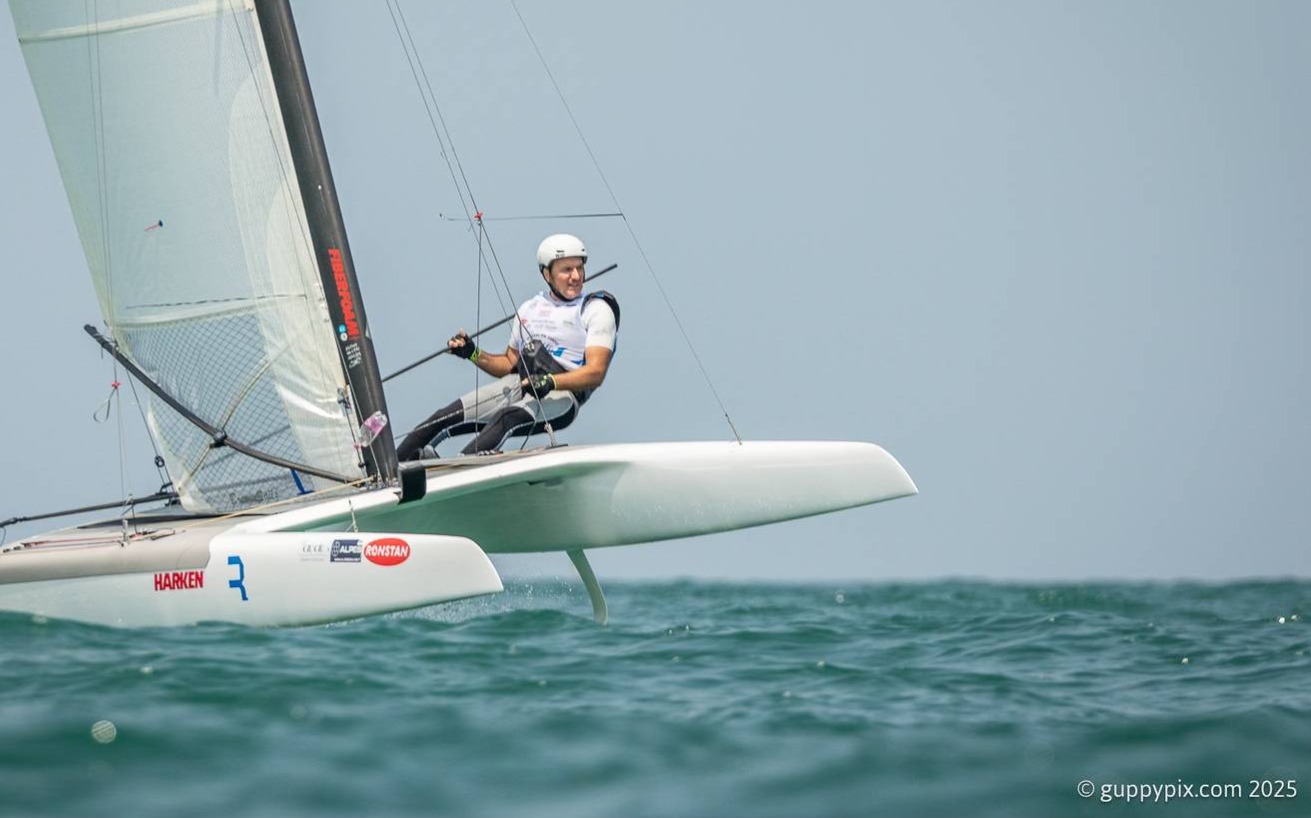
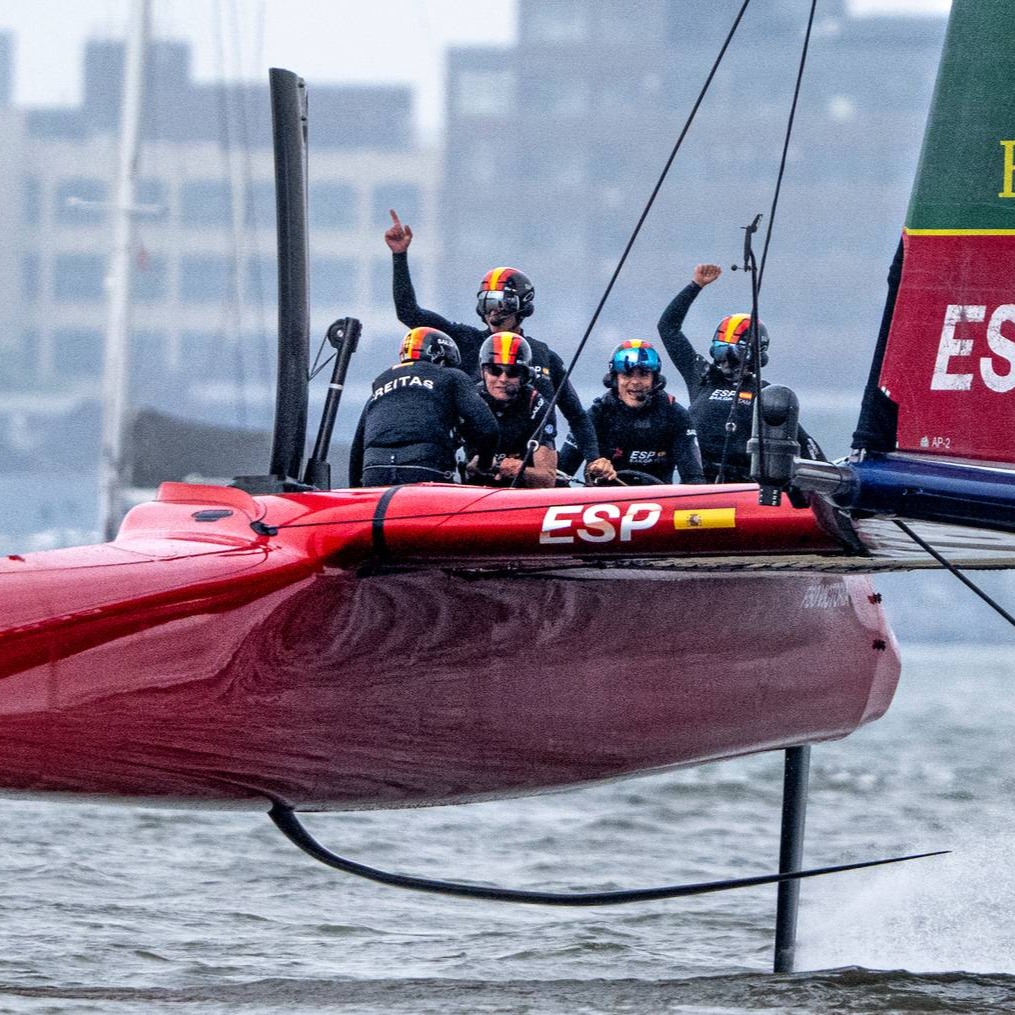
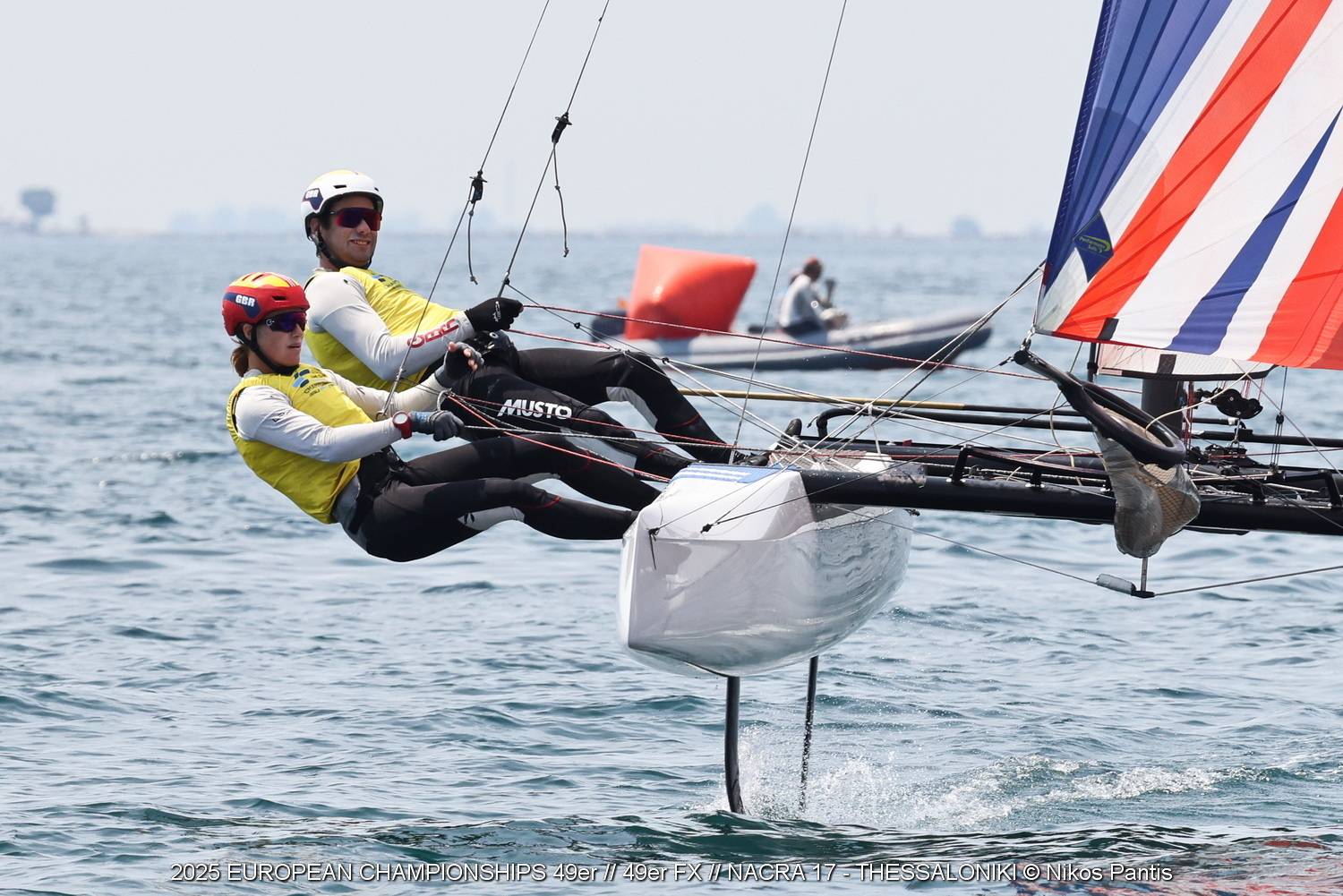
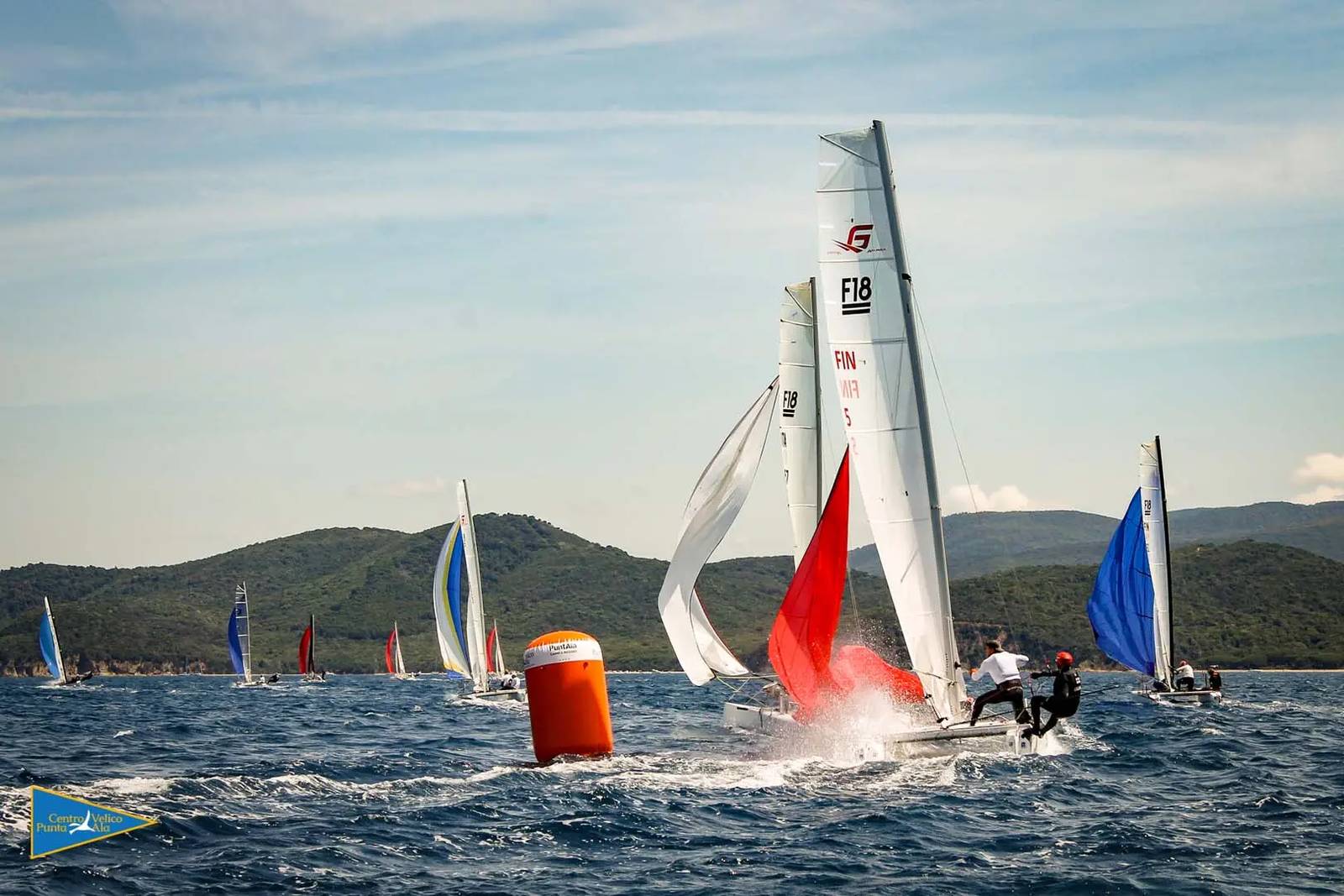
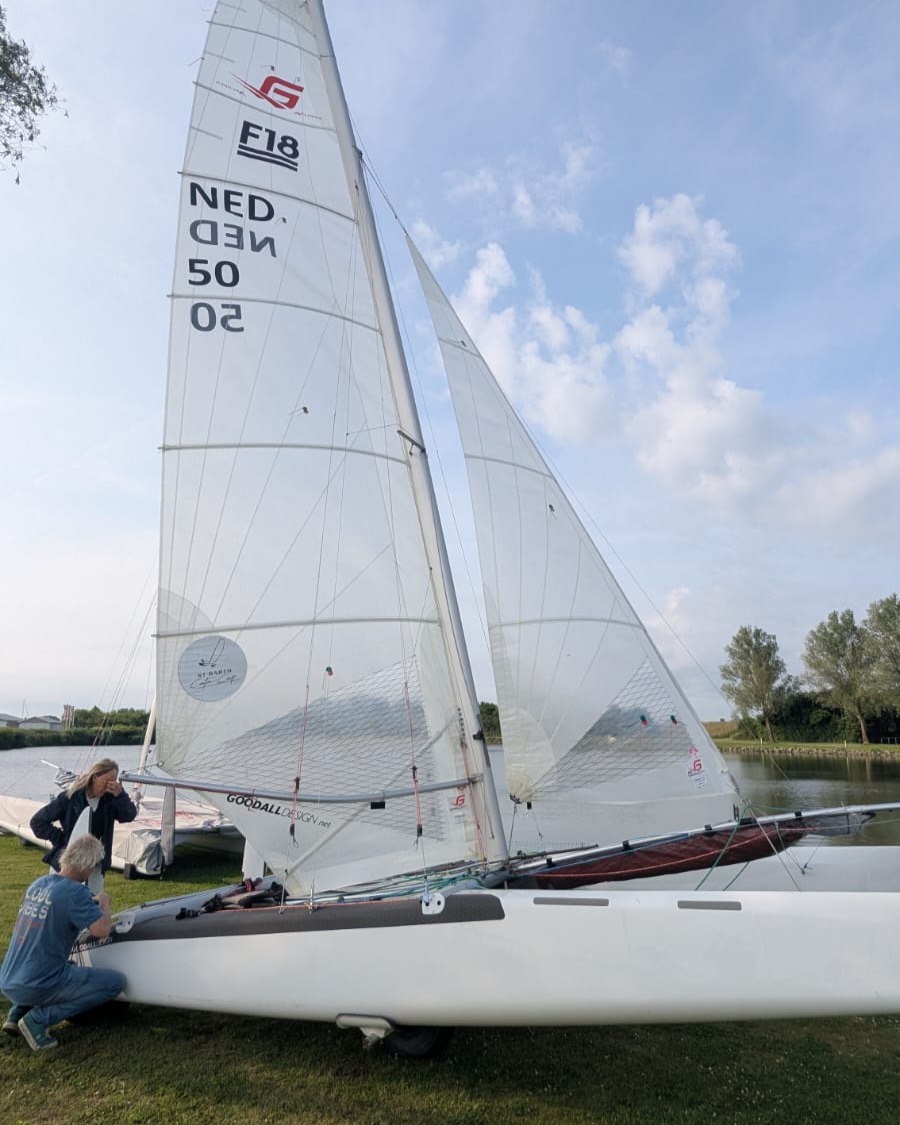
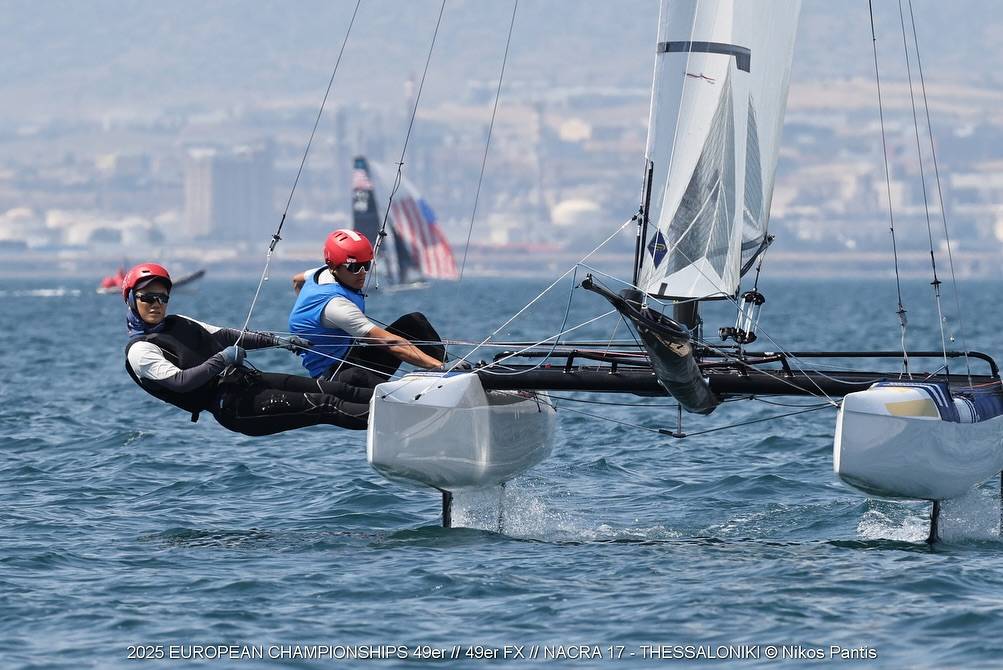




















very interresting stuff….but what's your view Martin? Your personal reflections are the reason why I follow this blog …
/T
Regardless the design issue, there are no doubt that marstrom is building with a fantastic quality, clearly the Stradivarius of boats. Just to own one of these boats is pure pleasure. /J